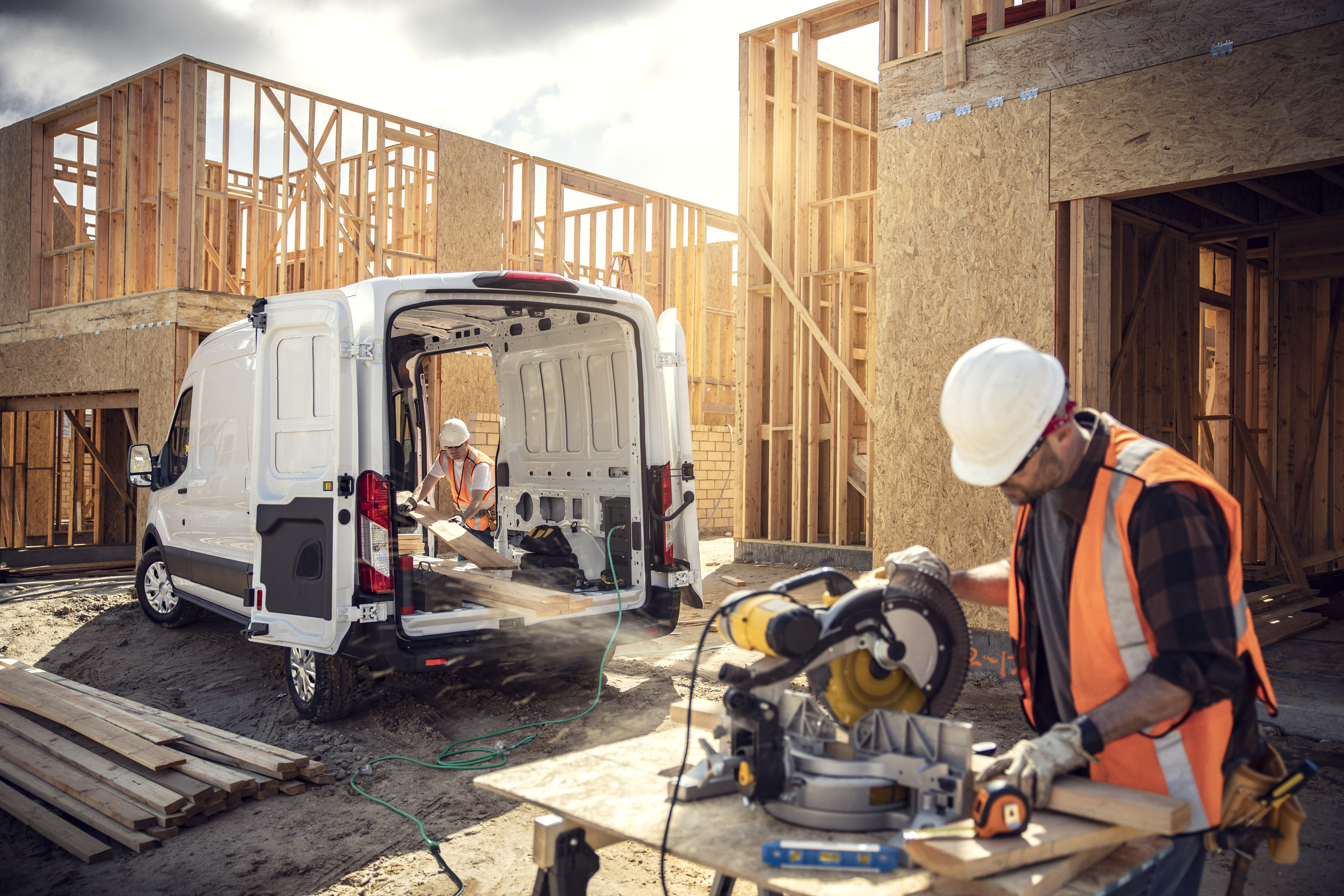Change is coming to Ford’s Transit work van lineup, but some things thankfully will stay the same.
Ford unveils its battery-electric 2022 E-Transit that completely rethinks how the vehicle is powered but retains a number of practical, work-related bits so fleet customers can continue to use the electric van the way they use their gasoline-powered Transits today.
The new E-Transit will have the same cargo and interior space as the current Transit work van, and Ford says it worked closely with upfitters who develop racks, bins and other accessories for the gas Transit to make sure they can be used with the E-Transit as well.
The E-Transit will be sold in eight body style configurations, including cargo van, chassis cab and cutaway versions, with three roof heights and three body lengths.
The E-Transit “is designed with the same easy access points and dimensions as its gasoline-engine counterparts, so you can carry over your upfit with ease,” says Ray Eyles, chief program engineer for Ford Transit Vans.
Ditching the gas engine means E-Transit drivers will get similar power with more torque. Ford is targeting 266 hp and 371 lb.-ft. (690 Nm) of torque for the E-Transit, compared to 275 hp and 262 lb.-ft. (355 Nm) from the current Transit with the 3.5L PFDI V-6. The Transit with the 3.5L EcoBoost V-6 offers 310 hp and 400 lb.-ft. (542 Nm).
Transit owners who need all-wheel drive will have to stick with the gas version, as the E-Transit will only be available with rear-wheel drive.
The E-Transit is designed to carry things, not people, with only the two front seats available for now. The gas-powered Transit can carry up to 15 people when configured as a passenger van.
Ford expects the E-Transit to be used as a delivery and work vehicle. The E-Transit's 67-kWh battery will offer a maximum range of 126 miles ([203 km] regular length with low roof height; with other configurations this can drop to 108 miles [174 km]) as well as Ford’s optional Pro Power feature.
Pro Power provides 2.4 kW of onboard power to use and recharge job site tools right from the vehicle’s battery (below). The feature also is available in the all-new ’21 Ford F-150 fullsize pickup.

For delivery services, the E-Transit will have a maximum payload of 3,800 lbs. (1,724 kg) for the cargo van and up to 4,290 lbs. (1,946 kg) for the chassis and cutaway versions.
The idea of an electric Transit is not entirely new. Ford unveiled the battery-electric Transit Connect Electric at the 2010 Chicago Auto Show, and conversion upfitter Azure Dynamics did build a small number of battery-powered vans about a decade ago.
But the new E-Transit is far more advanced. It offers several features designed for fleet managers, including web and app interfaces to monitor charging, energy consumption and driver behavior. The system will even notify fleet managers if an E-Transit is supposed to be plugged in but isn’t.
“These tools allow fleet managers to remotely manage access to public charging for drivers and have vehicle-level reporting to reimburse drivers for charging at home,” says Julius Marchwiki, Ford Commercial Solutions chief operating officer.
The E-Transit will come with safety technologies including a lane-keeping system with lane-keeping alert, road edge detection, driver drowsiness detection, pre-collision assist with automatic emergency braking and auto high beams.
Options includes adaptive cruise control, speed limit sign recognition, automatic speed limiting device, blindspot information system, cross-traffic alert, reverse brake assist and enhanced active park assist.
Ford will build the E-Transit at its Kansas City Assembly Plant, which also will make the all-electric F-150 pickup.
Ford is investing $400 million in the plant to build these two EVs, with the E-Transit starting production in late 2021 and the electric F-150 in 2022. The E-Transit will have a starting MSRP of under $45,000 for U.S. fleet customers.
“The E-Transit will deliver zero emissions to businesses globally, which can have a huge impact on their bottom line and cost of ownership,” says Jim Farley, Ford president and CEO. “A new era of sustainable progress starts here, today.”





